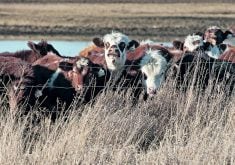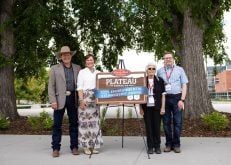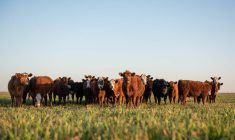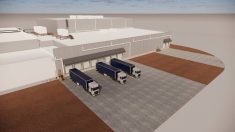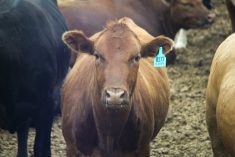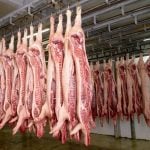Your head has told you for years that your facilities are long overdue for an upgrade. But other areas of the farm always took priority.
Finally, after a few years of less than stellar calving conditions in April and not being able to move the squeeze function on your chute because it was constantly frozen, the call was made and the barn was ordered.
And then after you finally pulled the trigger, Mother Nature comes along again and settles the debate.
Read Also
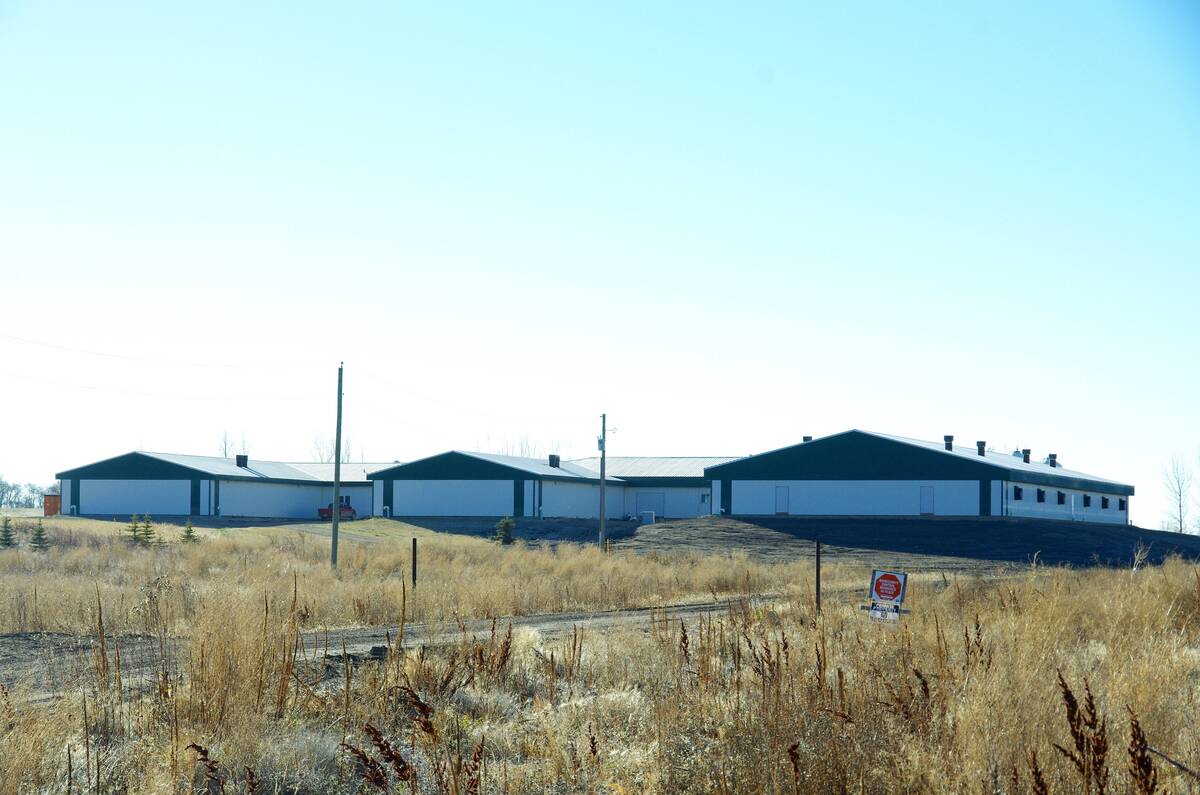
Get the best air in your hog barn
Farmers who pay more attention to ventilation, humidity, air pressure and temperature in the hog barn can get pigs gaining weight faster and keep them comfortable.
That was the case on the very first day we used our new modular calving barn last month. When we started working cattle in the morning it was -14 C but by midday, it had warmed to 2 C and freezing rain was coming down.
But we were nice and dry indoors.
It was a good start to the latest chapter in what has been a long and continuing journey. And one of the things I’ve learned along the way: Rome wasn’t built in a day, and neither are cattle facilities.
While we had a few things to work with, over time and with increasing cattle numbers, our facilities were in serious need of an upgrade.
We improved our cattle handling system in 2009 and purchased a scale at that time. With our facilities being outdoors, we made the scale portable to fit in the alley, but it wasn’t ideal to weigh animals.
Our calving facilities consisted of a 12×20 enclosed area on the side of an open front cattle shed. Inside, a homemade wooden gate separated the area into two pens — one having access to the door (and water bowl) and the other pen needed water hauled in.
The wooden gate would hold calm post-calving cows, but if the cow wanted out bad enough, she could help herself. This setup was fine when we were only calving 40 to 60 head, but as our cow numbers grew, we quickly realized we needed an upgrade — especially when we were faced with adverse weather.
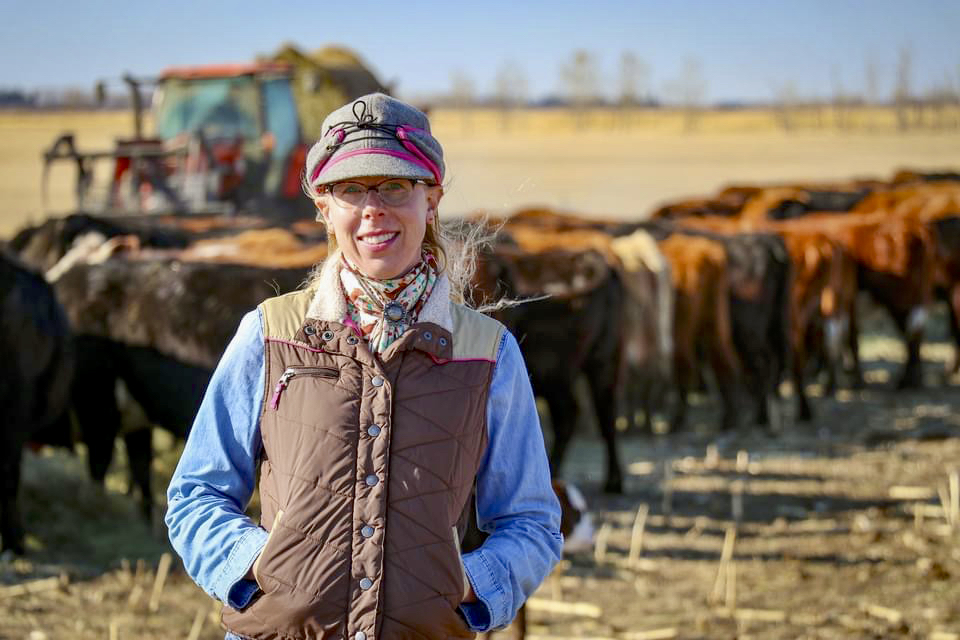
We began researching and initially started looking at pole barns. When looking at a location to put the pole barn, we weren’t sure if where we wanted to put it would work in the long run. We knew we also wanted to put our cattle handling facilities indoors, and there were many ‘what-ifs’ with putting up a permanent structure, like a pole barn.
We had a few other questions, other than flexibility in location, when it came to our barn.
We knew we wanted one side ‘open concept’ so finding a barn that was compatible with that option was a must. And let’s admit it, cattle — especially calving cows — can be hard on infra- structure, so making sure the interior was sturdy was another top priority.
And last, but not least, we wanted to be sure we could get a tractor in the barn, for feeding or bedding, so having a barn tall enough was on our list as well.
So we began investigating other types of structures and came upon an Alberta company started by a livestock producer that builds a variety of livestock equipment, including a unique calving barn. It is built out of 3-1/2-inch pipe and is brought in two separate pieces on a trailer. The two halves are then bolted together with one- inch ready rod, a ridge cap is put on, and the barn is ready to use. Because the barn is made of pipe, it is essentially movable, should plans change.
This was the biggest feature that convinced us to buy one. Because we knew we wanted to put our handling facilities inside as well, we weren’t sure if the facilities will be in the same place in the future. If plans change and we want to relocate, we can move the barn, if needed.
The barn we purchased is completely customizable. Our barn is 36×48 and we have half of the barn made into calving quarters and the other half an open concept design for the handling facilities. The calving side is made up of four 12×12 pens, complete with gates. One of the pens is set up as a maternity pen complete with head catch. On the other half of our barn, we were able to have it built ‘open concept’ style with no centre support posts. This gives us room to put an S-alley, palpation cage and chute, with the scale underneath, in that side.
While we were customizing our barn, we were able to get nine-foot walls (instead of the standard 8-1/2 feet) which gives us extra room, and the ability to drive a tractor inside.
We have high expectations for the barn and many of them have already been met the first few times we worked cattle.
With outdoor facilities, in the past, weather played a big factor in when we would be able to give shots, deworm or weigh. There were even times we would schedule the vet to come out weeks in advance, only to have him phone and cancel that day because of inclement weather. That proved to be very frustrating.
However, shortly after we started using the barn we hired the vet to preg check cattle. The weather was -5 C and shortly after we began working, it started snowing hard. Not only were we warm and dry indoors, but the vet didn’t have to cancel and was able to work without taking any weather-related breaks.
With calving season quickly approaching, I am eager to use the new pens after cows have calved. I’m hoping it will cut down on frozen ears, especially in our purebred calves. The new maternity pen will be nice to have should a cow need assistance in calving. Previously, we either haltered the quieter cows or used our cattle chute to restrain cows that needed assistance. But using the chute brings on risk especially if the cow goes down or if a calf puller needs to be used.
We are also planning on installing a camera system in the barn to monitor calving cows.
Making the initial investment, I have to admit, was a bit tough. It’s always a gamble whether infrastructure will pay off over time.
But we’re already wishing we would have got it sooner.
Having our handling and calving facilities indoors gives us quite an advantage and not only because of the very unpredictable weather lately. It also makes scheduling veterinary visits simpler as there’s no need to cancel because of inclement weather.
The barn was definitely an investment for our farm that will pay off in the long run.




